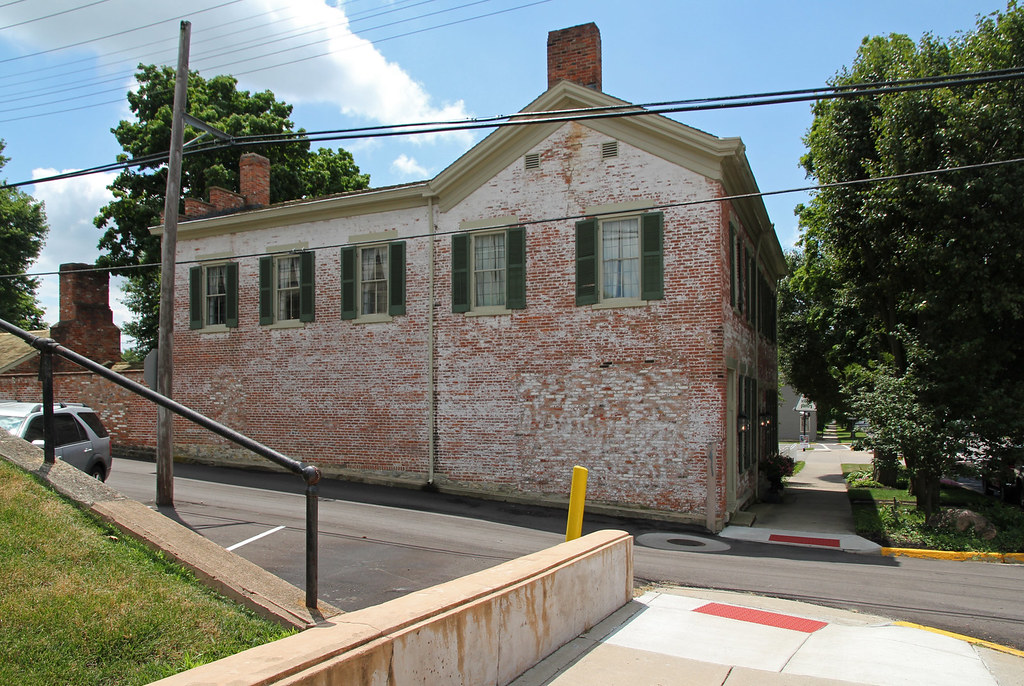 |
| Gutter, John Elliott House (1802); Symmes Township, Hamilton County, Ohio. This NRHP-listed stone dwelling was built within a year of Ohio's statehood. The frieze board, cornice, and gutter likely date from mid-century. |
Describing these gutters — and what differentiates them from their counterparts elsewhere — is a bit of a challenge. They're scattered widely across Ohio's southwestern counties (historically, the state's wealthiest region), from Preble and Darke (in the northwest) to Clermont and Brown (in the southeast), with the densest concentration in the Cincinnati orbit; occasionally, though, examples appear farther north. They're formed when a cornice reaches its wall's plane, then juts out horizontally, creating a distinctive "kick." As far as I can tell, they seem to be a mid-nineteenth-century innovation — most common to Italianate-era structures, but sufficiently abundant in other contexts to leave me scratching my head.
 |
| House; Eaton, Preble County, Ohio. This building's cornice is more developed than the John Elliott House's, but the integral gutter remains equally striking. |
 |
| South gable, Van Ausdal House; Eaton, Preble County, Ohio. |
Lest anyone think I'm inventing my assertion, I searched my database of historic rural residences; the distribution of built-in gutters is striking: 48 examples in Warren County, 17 in Butler, at least a dozen in Hamilton,* 10 in Clermont, and nine in Preble; but three in Greene and Montgomery, one in Brown, and none in Clinton and Adams.
 |
| Workers' cottages in Columbus's German Village neighborhood — well outside the integral gutter's core region of popularity. Compare the foreground home's eaves with those of its neighbors. |
Now, whenever I happen upon such a localized — nay, regionalized — quirk of architecture, I begin wondering about the origin (regional or ethnic) of those who employed it. (Of course, in this case, the method seems less useful, given the great temporal gap between the element's appearance and the settlement of the region in question.) The built-in gutter seems to correlate with concentrations of New Jerseyans, who flocked to the Symmes Purchase and surrounding lands. But such gutters aren't common in Ohio's other significant region of New Jersey settlement — the southwestern portion of the U.S. Military District. And, obviously, plenty of non-New Jerseyans employed the method, too. (It appears in Columbus's German Village, for goodness' sake!)
So, why are built-in gutters concentrated in Cincinnati and bordering counties? I don't know. A bit of meticulous research — tracing particular buildings' owners' immigration and combing through other states' NRHP listings — might reveal something, but I'll leave that research for the future.
* As of October 11, 2017, I've finished only part of my Hamilton County survey.
